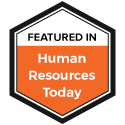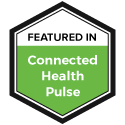3 minute read:
If you are a U.S. business, there is a good chance that one or more of your employees have taken emergency paid sick leave. Such leaves may have an impact on your organization’s Affordable Care Act (ACA) compliance in the form of the ACA’s Affordability requirements. Because the Internal Revenue Service (IRS) has yet to issue any COVID-19-related relief to employers under the ACA’s Employer Mandate, business leaders should keep the items below in mind throughout the 2020 ACA reporting year.
One significant way in which local and federal officials have responded to COVID-19 has been to provide paid sick leave that would be otherwise unavailable or simply unaffordable for employers. For example, the Families First Coronavirus Response Act (FFCRA), which applies to employers with under 500 employees and certain government entities, provides up to 80 hours of emergency paid sick leave at the employee’s regular rate of pay for COVID-19-related reasons. Congressional funding is appropriated for paid sick leave under FFCRA through payroll tax credits. In Los Angeles, the Mayor issued a Public Order, applicable to employers with over 500 employees in Los Angeles or 2,000 or more employees nationwide, providing for emergency COVID-19-related sick leave. Unlike FFCRA, there are no tax credits available for this emergency paid sick leave order. Other cities, such as Oakland, have also adopted emergency paid sick leave provisions.
Paid sick leave affects a critical piece of ACA compliance: affordability.
As a reminder to employers in conjunction with the Employer Shared Responsibility Payment (ESRP), the ACA requires Applicable Large Employers (ALEs)—organizations with 50 or more full-time employees and full-time equivalent employees)—to offer Minimum Essential Coverage (MEC) to at least 95% of their full-time workforce (and their dependents) whereby such coverage meets Minimum Value (MV) and is Affordable for the employee or be subject to Internal Revenue Code (IRC) Section 4980H penalties. Whether such coverage is Affordable is determined by reference to the employee’s household income. Because an employer generally will not know the employee’s household income, the final regulations under the ACA identify three separate “safe harbors” under which an employer could determine affordability: (1) the Form W-2 wages safe harbor, (2) the rate of pay safe harbor, and (3) the federal poverty line safe harbor. This article specifically focuses on the first safe harbor.
Under the W-2 wages safe harbor for 2020, an employer can show that an offer of coverage was affordable if the employee’s portion of the monthly premium for the lowest cost, self-only coverage was not more than 9.78% of the employee’ Form W-2, Box 1 wages. Paid sick leave affects the Form W-2 wages safe harbor because sick pay is considered to be taxable wages by the IRS and must generally be reported in Box 1 of Form W-2. Therefore, in 2020, employers would be wise to discuss the application of the W-2 wages safe harbor to their ACA reporting with a third-party expert. Employers may find that more offers of coverage are deemed Affordable under the W-2 wages safe harbor—without the typical drain on corporate coffers associated with regular payroll—because of the higher W-2 Box 1 figures resulting from FFCRA-funded paid sick leave. (Note: this would not be true for businesses subject to local paid sick leave ordinances, which may not provide tax credits available under FFCRA).





